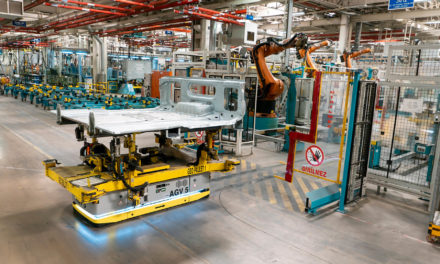Multi-tenant vs. single-tenant cloud deployment
Sponsor: Infor
While single-tenant deployment may have been a viable solution in the recent past, multi-tenant deployment offers numerous benefits for those looking to modernise their operations.
As a true cloud-based platform, multi-tenant deployment can offer vast amounts of storage, a speedy implementation, and advanced security capabilities. But why is multi-tenant deployment a better choice as a long-term solution?
The difference between single-tenant and multi-tenant
It’s important to understand the characteristics of these two deployment platforms so we can take note of key differences between them.
Single-tenant architecture typically provides separate software and server resources for each customer. This gives the customer’s enterprise plenty of control over the system, but it also requires more effort and a larger investment than with multi-tenant.
Some organisations ‘lift’ their legacy system with all its existing strengths and shortcomings and ‘shift’ it to the cloud in a single-tenant deployment. Unfortunately, this process perpetuates many of the same outdated processes organisations are hoping to evolve away from.
Single-tenant architecture requires the same resource-intensive and expensive upgrade processes as on-premises solutions. Also, the often-rigid structure of a single-tenant deployment limits the extent of changes that can be implemented; such lack of flexibility can impede an organisation’s growth.
As business activities increase, single-tenant system performance can suffer until the system is redeployed on new servers, requiring downtime and potential business disruption.
A multi-tenant environment gives several customers the use of the application within the same operating environment on the same shared hardware. This model provides all the benefits of cloud computing, such as greater agility and security, plus the costs are shared across more business users.
This helps reduce the cost for the provider even while it leverages more robust technology. This in turn enables providers to offer lower prices.
A multi-tenant environment also requires the customer to adopt and adhere to proven, standardised processes; this approach helps avoids a ‘modification mindset’ which can unnecessarily complicate upgrades.
Well-engineered cloud-based software, such as Infor CloudSuite industry solutions, enable personalisation by using extensibility and platform
tools, rather than code modifications. With multi-tenant deployment, organisations get flexibility, scalability, reliability and value.
Nine benefits of multi-tenant deployment
1. Security expertise: Benefit from the continuous scrutiny of experts who are vigilant to new attack approaches. In self-hosted, single-tenant environments, organisations need to hire an entire team of highly experienced IT security specialists. In some regions, those skills may be difficult to find in the available talent pool.
2. Continuous upgrades: Ensure your solution stays modern. You don’t have to schedule large-scale events every two to three years where
you conduct a major upgrade. Instead, multi-tenant deployments typically receive smaller updates as they are released and implemented by the provider, which means you don’t need to make your own changes that can potentially break future upgrades. In addition, regular updates mean that you’ll have access to the latest changing regulations, even across
multiple regions.
3. Cost control: Save your resources. You won’t need to dedicate extra staff or security, or have to pay for excess capacity for peak periods and extra space for full redundancy and disaster recovery.
4. Agility: Support growth and change of your organisation. Because a multi-tenant solution is kept modern, it will have the localisations needed for new regions. In addition, you can easily adjust capacity as needed for mergers or new branches.
5. Innovation: Free your IT team from maintenance tasks so that they can focus on more strategic issues. Also, multi-tenant provides elastic storage capacity, which is the type needed for advanced technologies
relying on large amounts of data, such as the internet of things, artificial intelligence and machine learning.
6. Platform as a service: Create reports, personalise interfaces and more without having to alter code thanks to the multi-tenant architecture’s no code/low code tools. Modern multi-tenant solutions should provide tools to support extensibility and offer the ability to personalise without the need for cumbersome modifications.
7.Top-quality, sophisticated solution: Be confident that the multi-tenant solution has been and continues to be highly scrutinised by the provider. For software to be viable in a multi-tenant environment, it must meet continued, rigorous testing and quality
control standards.
8. Opportunity to streamline: Adopt proven best practices and get away from processes that have prevailed simply because “we’ve always done it this way”. Migrating to a multi-tenant deployment is the chance to change workflows, priorities and even workers’ attitudes. For example, you can put the customer at the centre of your enterprise or focus on product innovation. Eliminating modifications will help keep teams focused on new accomplishments rather than preserving a familiar methodology. It also enables discipline for the future, providing a barrier to add-on projects that could adversely impact the software code.
9. This is the future: Leverage multi-tenant deployment as the basis for a long-term strategy and operational action plan. The benefits listed here are the foundation of a digital transformation. In addition, migrating to a multi-tenant deployment is likely the last major implementation you’ll ever have to do because it will continue to adapt as technology changes.
Embarking on a digital transformation journey
Choosing between single-tenant and multi-tenant deployment is a critical part of your upgrade strategy. It’s often a decision that’s rushed or, by default, left to the IT team. The IT team may favour the single-tenant option to retain more control. The CEO and executive leadership, however, may be seeking an end-to-end transformation.
If digital transformation is the goal and you want a long-term solution, multi-tenant is the best option for you. Choosing multi-tenant deployment is the first step in a digital transformation journey.




